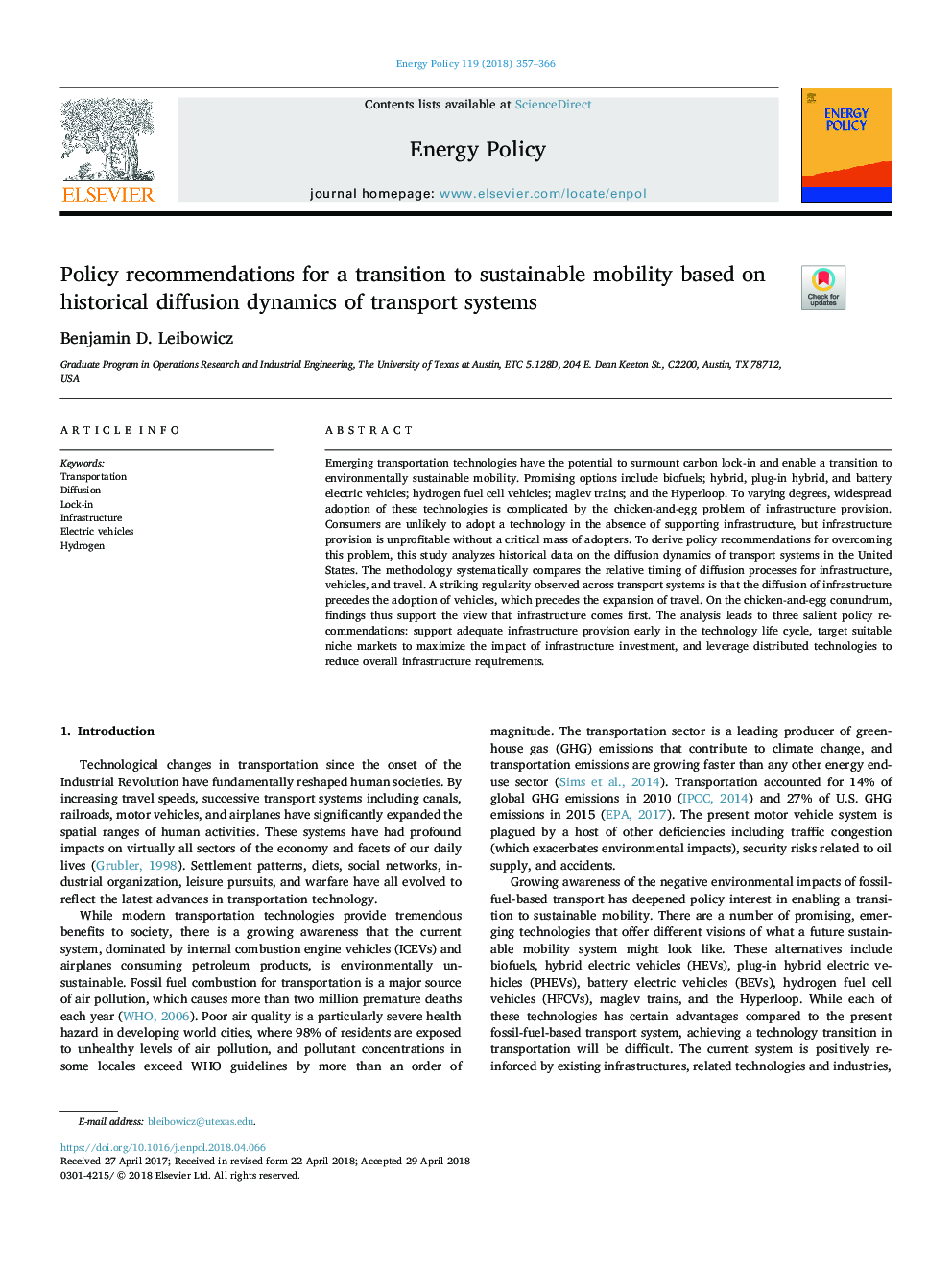| Article ID | Journal | Published Year | Pages | File Type |
|---|---|---|---|---|
| 7397206 | Energy Policy | 2018 | 10 Pages |
Abstract
Emerging transportation technologies have the potential to surmount carbon lock-in and enable a transition to environmentally sustainable mobility. Promising options include biofuels; hybrid, plug-in hybrid, and battery electric vehicles; hydrogen fuel cell vehicles; maglev trains; and the Hyperloop. To varying degrees, widespread adoption of these technologies is complicated by the chicken-and-egg problem of infrastructure provision. Consumers are unlikely to adopt a technology in the absence of supporting infrastructure, but infrastructure provision is unprofitable without a critical mass of adopters. To derive policy recommendations for overcoming this problem, this study analyzes historical data on the diffusion dynamics of transport systems in the United States. The methodology systematically compares the relative timing of diffusion processes for infrastructure, vehicles, and travel. A striking regularity observed across transport systems is that the diffusion of infrastructure precedes the adoption of vehicles, which precedes the expansion of travel. On the chicken-and-egg conundrum, findings thus support the view that infrastructure comes first. The analysis leads to three salient policy recommendations: support adequate infrastructure provision early in the technology life cycle, target suitable niche markets to maximize the impact of infrastructure investment, and leverage distributed technologies to reduce overall infrastructure requirements.
Related Topics
Physical Sciences and Engineering
Energy
Energy Engineering and Power Technology
Authors
Benjamin D. Leibowicz,
